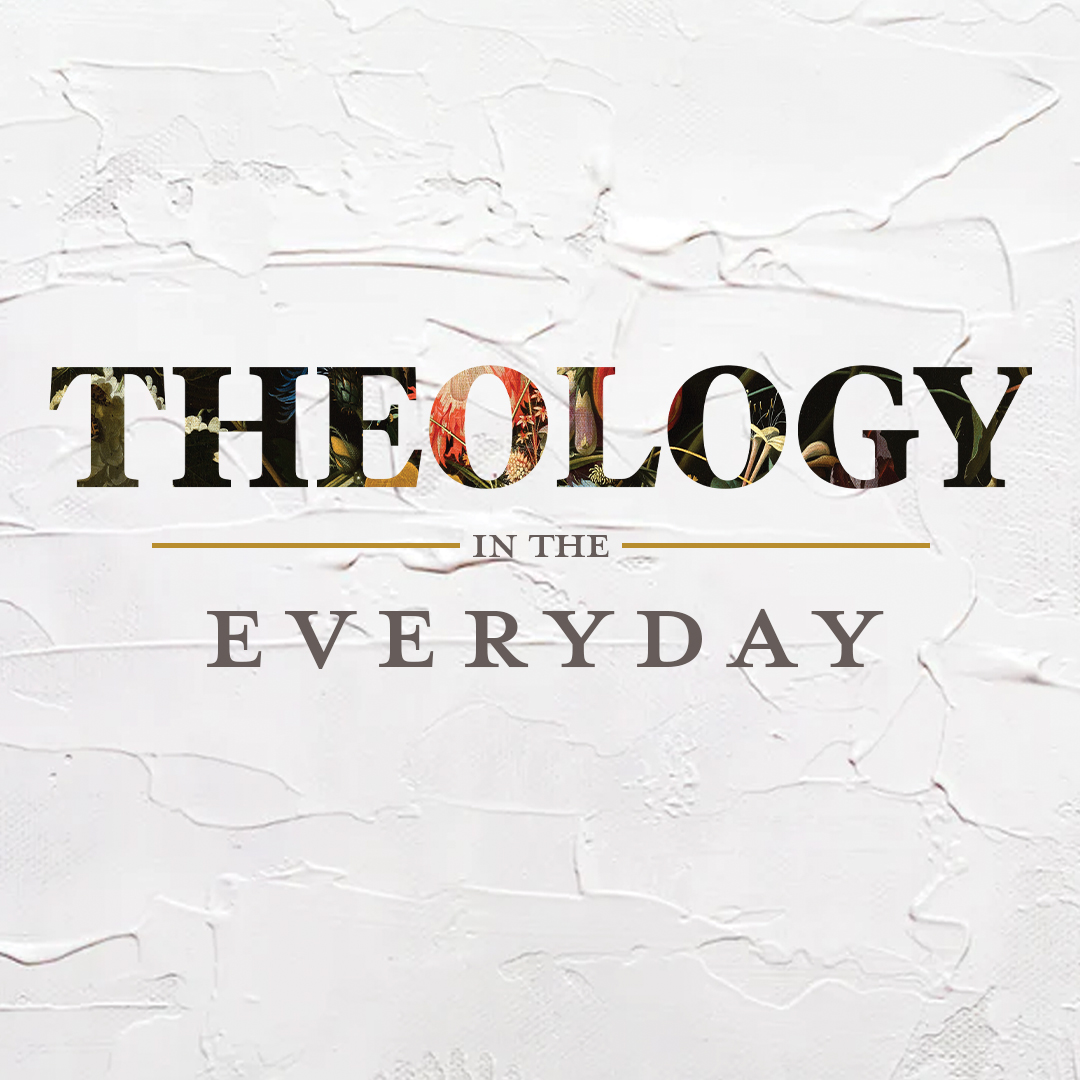

Editor’s Note: The Theology in the Everyday series seeks to introduce and explain theological concepts in 500 words or less, with a 200-word section helping explain the doctrine to kids. At For The Church, we believe that theology should not be designated to the academy alone but lived out by faith in everyday life. We hope this series will present theology in such a way as to make it enjoyable, connecting theological ideas to everyday experience and encouraging believers to study theology for the glory of God and the good of the Church. This week, the afterlife.
Is there life after death? Will I live on in a state of eternal bliss or in a state of eternal torment? Or will I simply cease to exist? These questions have intrigued and haunted human beings from our origins. Every world religion and philosophy has had some answer or other to these most pressing questions, from the ancient Egyptians, who mummified the dead and gave them provisions for the netherworld, to modern atheists who reject any notion of personal existence after death. The answers to these questions shape not only a one’s hope for the future, but they also give purpose and meaning to life in the present. From a Christian perspective, the answers to these questions are woven throughout the whole fabric of Christian theology: what we believe about God, the person and work of Christ, the identity, destiny, and constitution of human beings (body and soul), the meaning of salvation, the mission of the Church, and the end of history.
So, what does the Bible say about the afterlife? The best place to begin is not at the end but at the beginning. In the creation account, God formed Adam from the dust of the ground and breathed into him the breath of life, constituting our first father as a “living soul” (Gen. 2:7). Likewise, Eve was taken from Adam’s side (Gen. 2:21-22), as a co-equal divine image bearer (Gen. 1:27), and Adam’s posterity share in that same image as well (Gen. 5:3). Thus, all human beings possess dignity and goodness as ensouled bodies (or embodied souls). The tragic sin of our first parents, however, introduces the sentence of death to the human race. Now, after the fall, the unnatural state of death is our common human lot. Death introduces not only a spiritual separation from God, a relational separation from one another, and an existential separation from our own selves; it also introduces a separation of the soul and the body.
Sometimes the Old Testament can speak of death as a definitive end (Psalm 6:5; 30:9; 88:10-12; 115:17; Isa. 38:18), but this is only from the perspective of life on earth. In other places, the Old Testament speaks of some kind of ongoing personal existence after death. The righteous dead are said to “go to [their] fathers in peace” (Gen. 15:15) or to be “gathered to [their] people” in death (Gen. 25:8, 17; 35:29; 49:33; Num. 20:24; 27:13). Echoing the creation language of Genesis 2, the Preacher writes that “the dust returns to the earth as it was, and the spirit returns to God who gave it” (Ecc. 12:7). For the unrighteous, a more sobering prospect remains after death. Those who participated in Korah’s rebellion were swallowed up by the earth and went “down alive to Sheol,” the place of the dead (Num. 16:30, 32). Elsewhere, the Old Testament speaks about the possibility of “going down to Sheol” in “mourning” (Gen. 37:35). Sheol (the Greek term was Hades) was the abode for all of the dead in the Old Testament, but it appears that there were at least two possible outcomes in that netherworld: the righteous dead experience the peace of being gathered to their people and the unrighteous dead experience Sheol as judgment. The calling up of Samuel from the dead by the medium at En-Dor, though an illicit attempt to communicate with the dead, is further evidence of this teaching in the Old Testament (1 Sam. 28).
But the Old Testament also points to another, more glorious state of life after death: the resurrection of the body. There are hints of this teaching in multiple places in the Old Testament. After all of his suffering, Job waxes poetic about the prospect of an embodied afterlife: “For I know that my Redeemer lives, and at the last he will stand upon the earth. And after my skin has been thus destroyed, yet in my flesh I shall see God” (Job 19:25–26). Ezekiel’s vision of the valley of dry bones being restored to life also points in this direction (Ezek. 37). But the clearest teaching on the resurrection of the body in the Old Testament comes in Daniel 12 in his vision of the end of history:
And many of those who sleep in the dust of the earth shall awake, some to everlasting life, and some to shame and everlasting contempt. And those who are wise shall shine like the brightness of the sky above; and those who turn many to righteousness, like the stars forever and ever (Dan. 12:2-3).
From this teaching, the ancient Hebrews began to see that the afterlife comes in two stages. At death, the soul departs the body and goes to the place of the dead (Sheol/Hades), where the righteous dead are comforted in Abraham’s Bosom/Paradise (Luke 16:22; 23:43) and where the unrighteous dead suffer in torment (Luke 16:23). But this is merely a provisional or intermediate state. The final state of human existence will come at the end of history when all of the dead will be raised bodily, some to everlasting life and some to everlasting judgment. Each person’s body and soul will be reunited in an immortal, resurrected state.
The New Testament writers assume the Old Testament teaching on the afterlife, but they see it as fundamentally altered by the work of Jesus Christ. Death was definitively defeated through the atoning death of Jesus. Furthermore, Jesus himself descended to the place of the dead in his own intermediate state, the time between Good Friday and Easter Sunday (Eph. 4:9). In Sheol/Hades, Jesus proclaimed his victory over death (1 Pet. 3:19), seized the keys to Death and Hades (Rev. 1:18), and liberated the souls of the Old Testament saints in Sheol (for more on Christ’s descent to the dead, see this important work). This is the so-called “harrowing of hell”: Jesus entered into death, that most harrowing (that is, distressing) human prospect, and rather than being himself harrowed by hell, he harrows it! Then, on that glorious Easter morning, Jesus burst the bonds of death and emerged from the tomb as the firstfruits of the general resurrection which will happen at the end of the age. From now on, all who die in the Lord can rest assured that they will also be raised in glory with him (Rom. 6:5; 1 Cor. 15).
Some Christians and sectarian groups have espoused a notion of “soul sleep,” in which the soul at death simply passes from consciousness until the resurrection of the body at the second coming of Christ. Others have argued that believers are immediately resurrected upon death—that they are somehow translated in time to the eschaton (that is, the end of history). But the New Testament seems to teach the same two-stage afterlife as the Old Testament, only reoriented by the work of Christ. After death comes the judgment. So, when unbelievers die, their souls go to hell, where they await the resurrection of their bodies, at which point they will experience the final judgment: the “lake of fire” (Rev. 20). Until the second coming, believers too must experience the painful separation of death. In this intermediate state between death and resurrection, the souls of believers are “away from the body” but are consciously “at home with the Lord” (2 Cor. 5:8). They “depart” the “flesh” in order to “be with Christ” (Phil. 1:23-24). But this disembodied state is not the final word. The martyred souls under the throne in heaven await their final vindication: “They cried out with a loud voice, ‘O Sovereign Lord, holy and true, how long before you will judge and avenge our blood on those who dwell on the earth?’ Then they were each given a white robe and told to rest a little longer, until the number of their fellow servants and their brothers should be complete, who were to be killed as they themselves had been” (Rev. 6:10-11). The final vindication, not only for the martyrs but for all the believing dead, will come at the return of Christ when “the dead in Christ will rise first” (1 Thess. 4:16). Then, those who are alive at the second coming will be immediately translated into their resurrected state.
There are several important lessons that we can draw from this rich biblical teaching on the afterlife.
First, be prepared for death. No one knows the time of his departure from this life. We should order our affairs each day with our death in view. The Christian faith is as much about learning to die well as it is about learning to live well (though it is about both and they are intimately related). The most important thing that we can do to prepare for death is to repent of our sins and to trust in the guilt-removing, death-destroying gospel of Jesus Christ.
Second, help others prepare for death. The mission is urgent. Share the gospel with your unbelieving family members and friends. Support global missions by going or sending. Recognize that unbelievers are not our ultimate enemy. They too have an enemy who seeks to enslave them to fear and unbelief (Heb. 2:14-15).
Third, live in hope. Death is a frightening prospect, to be sure. The death of loved ones leaves a painful scar on our souls. But Christians can face death with confidence in the mercy and power of the Lord Jesus Christ. When the apostle John saw a vision of the Risen Lord, he “fell at his feet as though dead.” The response of the Lord to John’s fear should hearten every believer in the face of death: “But he laid his right hand on me, saying, ‘Fear not, I am the first and the last, and the living one. I died, and behold I am alive forevermore, and I have the keys of Death and Hades’” (Rev. 1:17-18).
For the Kids:
It is sad to think about, but every person will die one day. Maybe you know someone who has died, a grandparent or someone else in your life. It is important to know that this is not the way it is supposed to be! People die because of sin, not necessarily because their own sin but because of the sin of all humanity in Adam and Eve.
Death brings about a separation. Each person is made up of two main parts: a body, which you can see, and a soul, which you cannot see. The soul is that part of you that was made to know and love God and that will live forever. When a person dies, his soul is separated from his body. For those who believe in and follow Jesus, their souls will go to be with Jesus in heaven. For those who do not believe in and follow Jesus, their souls will go to a place of judgment called Hell.
But there is hope in death. Because of the death and resurrection of Jesus, all who turn from their sins and believe in him can know that they will go to heaven when they die. But there is even better news! When Jesus comes back to earth one day, your body will be raised from the dead and reunited with your soul so that you can spend forever with Jesus in a beautiful and glorious body for ever and ever. So, Christians don’t have to fear death. We can put our hope in him, even when we are afraid.

